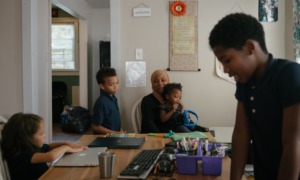Youth placed in juvenile justice institutions face a fundamental obstacle in their career pathway: They have been removed from their communities and lack access to the full array of educational and job opportunities available to their peers. Accordingly, the best long-term solution to the many barriers to career success “disconnected” youth face is to keep them out of the juvenile justice system entirely — and, in particular, out of juvenile detention and correctional institutions.
Indeed, although the goal underlying the juvenile justice system is rehabilitation — meaning that when youth leave the system they will be better off than when they entered, ready to gain employment and be contributing members to society — most juvenile facilities do little to prepare youth for adulthood and fail to properly treat the issues contributing to problematic behaviors.
 In particular, many facilities are ill-equipped to provide appropriate treatment for the roughly 75 percent of youth in their care who were previously victims of violent trauma. Without treatment, this trauma can manifest as behavioral health conditions, mental illness and substance abuse, all of which are present at rates two to three times more for children in the juvenile justice system. Moreover, the poor conditions in juvenile facilities can often exacerbate these conditions, leading to further mental health problems. These issues are not new, but any proper response requires a thoughtful systemwide effort.
In particular, many facilities are ill-equipped to provide appropriate treatment for the roughly 75 percent of youth in their care who were previously victims of violent trauma. Without treatment, this trauma can manifest as behavioral health conditions, mental illness and substance abuse, all of which are present at rates two to three times more for children in the juvenile justice system. Moreover, the poor conditions in juvenile facilities can often exacerbate these conditions, leading to further mental health problems. These issues are not new, but any proper response requires a thoughtful systemwide effort.
That’s exactly what Bob Listenbee plans to achieve. Previously serving as chief of the Juvenile Unit of the Defender Association of Philadelphia for 16 years, Listenbee was later appointed by President Barack Obama as administrator of the U.S. Department of Justice’s Office of Juvenile Justice and Delinquency Prevention (OJJDP). Now, back in Philadelphia as a fellow with the Stoneleigh Foundation, Listenbee hopes to build bridges between the various justice system players to create a comprehensive support system for youth. He recently shared some of his innovative ideas with us.
Under Listenbee’s leadership, OJJDP issued a report finding that trauma will continue to manifest and disrupt a youth’s educational and emotional development until properly addressed. The report emphasized the implementation of “trauma-informed care,” a systemwide approach that recognizes the unique needs of youth who have experienced trauma during childhood. To effectively address trauma, ensuring it does not contribute to later involvement in the justice system, immediate intervention is necessary. Programs that provide counseling and support to young people experiencing domestic violence or gang violence at the moment of the impact have been proven effective.
Too often, trauma left untreated can manifest into involvement in the justice system. Rather than criminalizing the behaviors and incarcerating young people, further exacerbating the trauma they experience, effective programs divert young people out of the justice system and into treatment programs. When youth require more supervision than just treatment, we must make sure systems provide adequate treatment programs that are individualized to meet the youth’s needs.
In contrast, if trauma is left unaddressed, youth are unlikely to fully benefit from other rehabilitation programs such as job training and internships. Because of this, trauma-informed care must be included alongside other career programming so that youth can begin properly preparing gainful employment upon release. If trauma-informed care and job training are implemented successfully, our juvenile justice system can become a real instrument for positive change and rehabilitation.
Listenbee has repeatedly emphasized that just having the answers isn’t enough. The real challenge is implementing these changes across the country so we can start healing our youth as fast as possible. Addressing the root causes of incarceration will give “disconnected” youth the best chance to reach their potential and achieve their career goals.
At Juvenile Law Center, we agree that this approach will best serve not only young people but also their greater communities. We recommend it as a practice for all who are seriously interested in tackling issues of youth employment with system-involved kids.
Patrick Took is a legal intern at the Juvenile Law Center.
This is one in a series of blog posts from the Juvenile Law Center on career pathways and barriers for system-involved youth. It has been slightly edited and is reposted with permission. See the original and full series here.





























